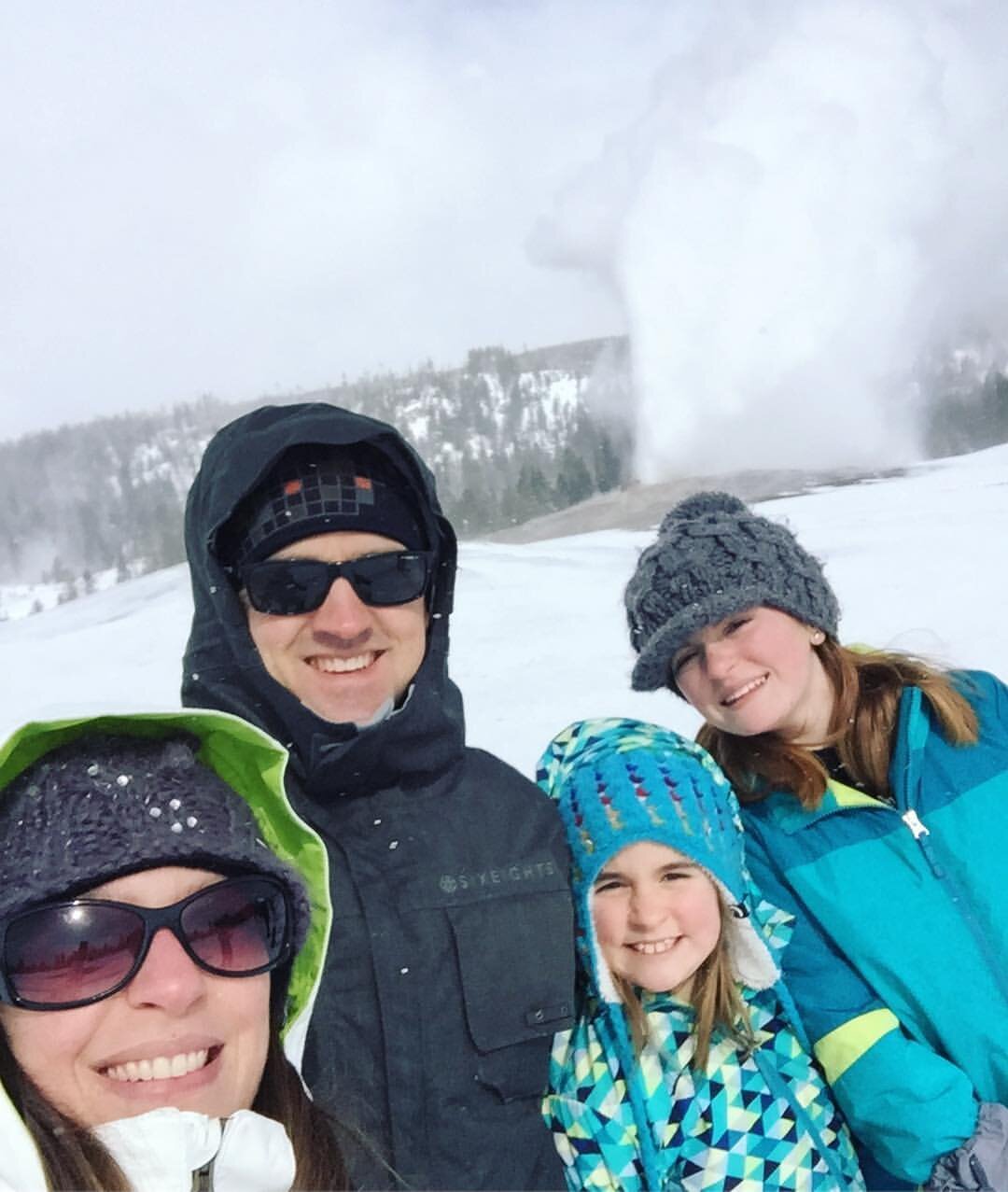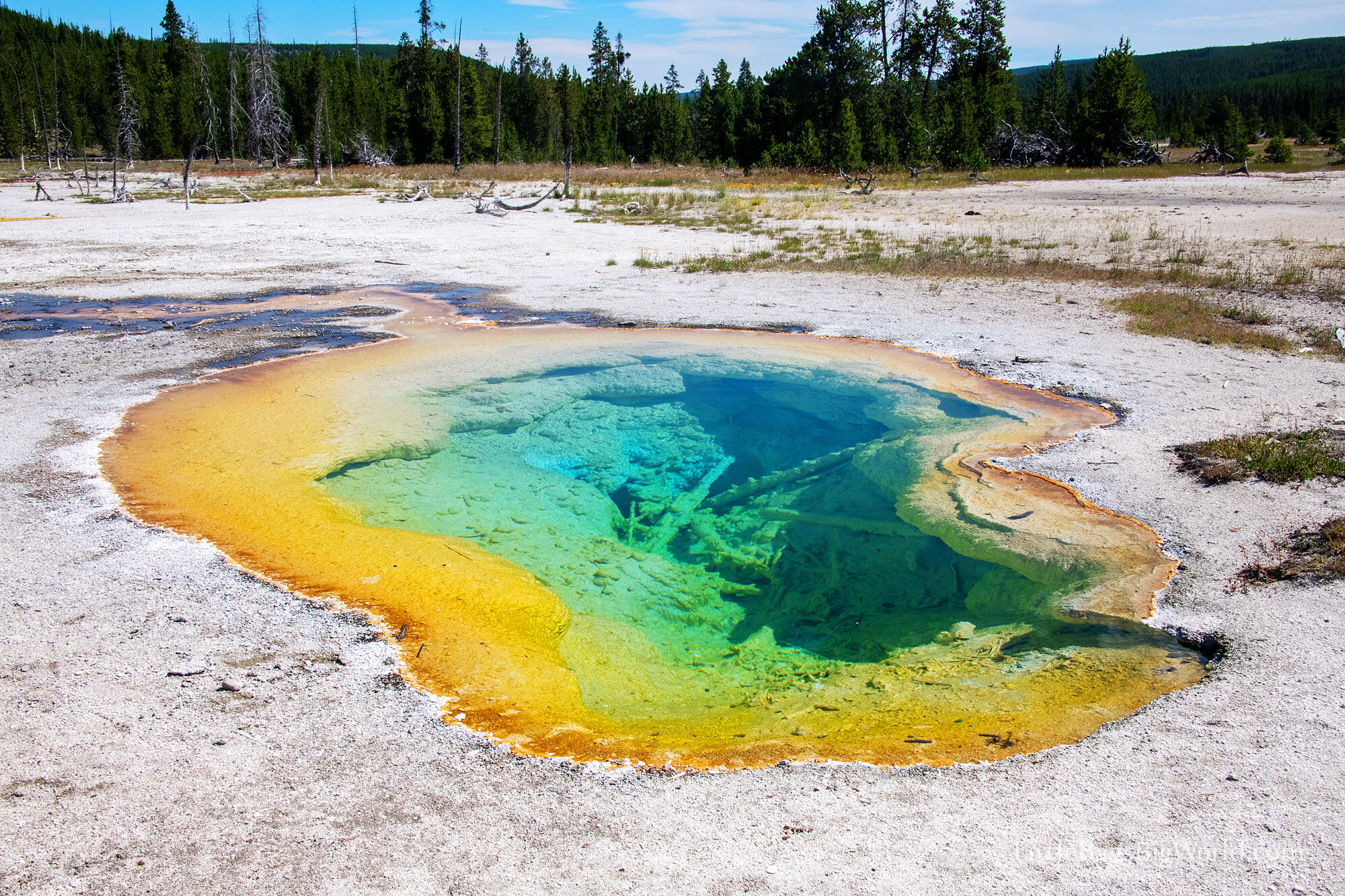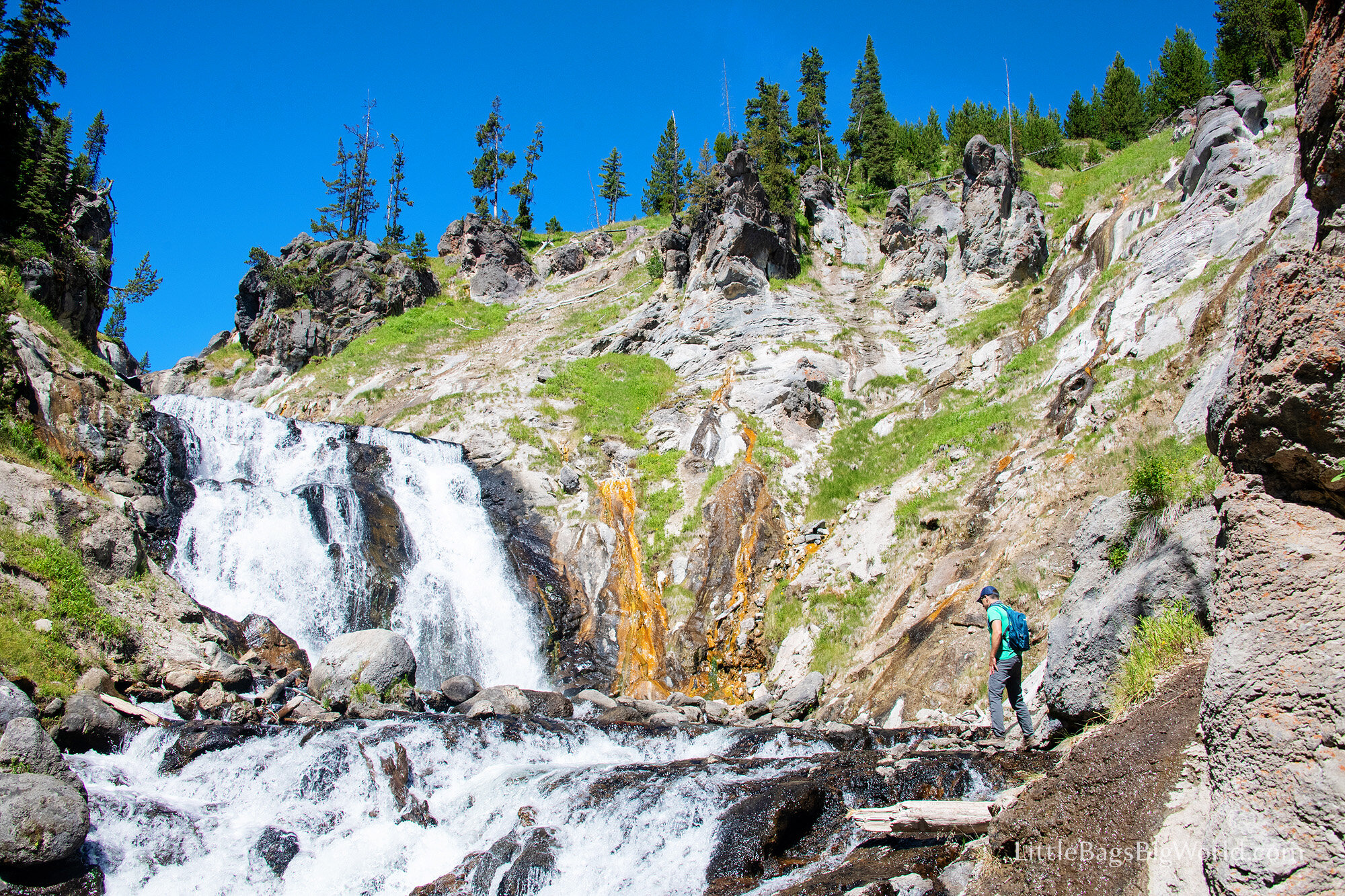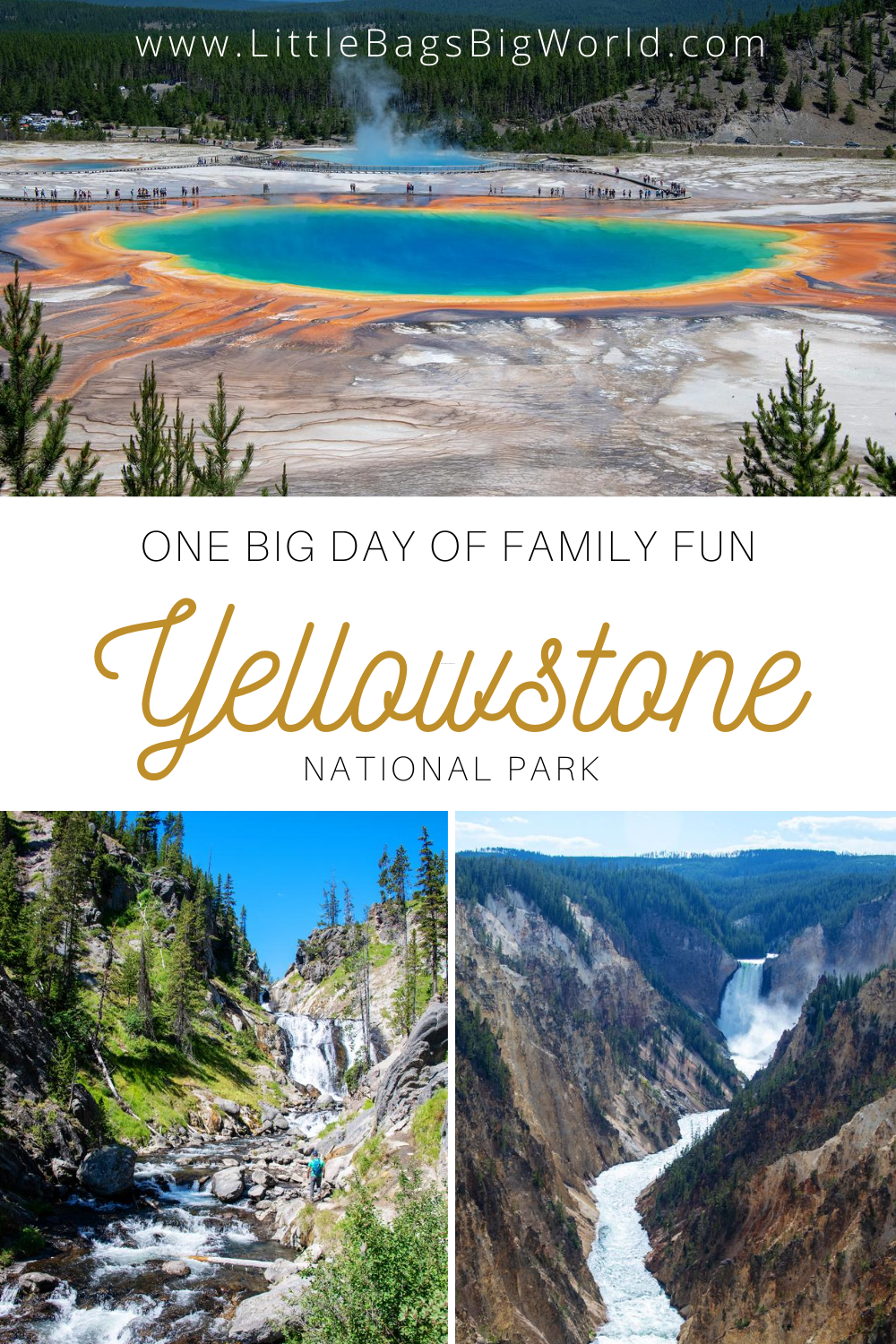Yellowstone National Park
WHO
Our family of four went on this road trip in late July 2020, when Averhy was 16 and Eden was 13 years old. We also visited Yellowstone in the winter of 2017, when Averhy was 13 and Eden was 10 years old.
WHAT
For our summertime visit to Yellowstone, we decided to take a road trip because the COVID-19 outbreak cancelled our original overseas vacation plans. What better way to socially distance by spending time in nature - away from people as much as possible! We used two Motherlode Backpacks and one full-size suitcase for clothing. Because we were using our own van for the the entire trip, we could pack some extras (like card games, Sky’s guitar, pillows, and a cooler for food) and these other essentials:
Inflatable kayaks and life jackets (used at Teton & Glacier)
New hiking shoes for Averhy and hiking boots for Eden
Camelbak Helena & Daystar backpacks & water bladders
You will definitely want to buy an Annual National Park pass for this road trip. The $80 pass covers entrance fees at national parks for a driver and all passengers in a personal vehicle at per vehicle fee areas (or up to four adults at sites that charge per person). The pass is valid for one year from the end of the month you purchase it - so if you buy a pass on July 1, 2020 it will expire on July 31, 2021. You can buy the pass online, or at the entrance to most national parks.
WHEN
It was great to see this park in two different seasons! During the winter, we visited some of the more popular sites on a guided tour, because they were less crowded and many of them were only accessible by guided tour.
For our summer visit, we took a road trip during the middle two weeks of July and spent one long day at Yellowstone right in the middle. We skipped the most popular sites since we had visited them in the winter, and hit some of the less well-known trails instead. Late July is a great time to visit national parks and sites in the northern Rocky Mountains because the temperatures are still mild - but that also means the parks can be crowded.
WHERE
For our summer visit, we stayed one night at
Absaroka Lodge near the Yellowstone north entrance in Gardiner, Montana. During our wintertime visit, we stayed in Big Sky, Montana and drove down to West Yellowstone to take a snowcoach tour of the park for one long day.
The map shows the sites we visited during our summertime road trip. At the end of this post I’ve included some tips for visiting in the winter.
WHY
We enjoyed this road trip because most of the drive is filled with beautiful views. Coming from central Illinois (where it’s flat flat flat!) we really enjoyed seeing the change from cornfields to rolling plains to rugged mountains. The south portion of Yellowstone is a scenic drive, and if you’re continuing north beyond Yellowstone, the drive to Glacier National Park in Montana is especially pretty. I know that long road trips can be intimidating if you’ve never done one before, but it is doable. We have done multiple long road trips over the years, starting with a 24-hour drive to Arizona when Averhy was 2 years old. The key is to be patient, flexible, and have lots of snacks! I wrote about some of our strategies for traveling with kids in this post.
HOW
Yellowstone South to North
We entered the park from the south entrance, which meant the first part of our time in Yellowstone was spent driving through lots of wooded areas. The road follows a river that is carving out a canyon in the forest. There are several viewpoints where you can stop and take a look at the river and waterfalls on the east side of the road.
Our first stop was at Kepler Cascades. This waterfall is easily accessible from the road, with a short boardwalk to an overlook. This gives you a great view of the waterfall on both sides of the lookout point.
Driving north from Kepler Cascades, the next main stop is at Old Faithful. There is a visitor center here, restrooms, dining options, and a hotel. We visited Old Faithful during our winter trip in 2017, so we did not watch the geyser during our summer visit. The geyser erupts about every 90 minutes, so if you do stop here, keep in mind that you might have a long wait on a crowded boardwalk.
When we visited Yellowstone in the winter, we arrived at Old Faithful about 5 minutes after it had erupted, so we used the 90-minute wait to use the restroom and eat lunch in one of the yurts nearby.
Continuing north, our next stop was at the Biscuit Basin Trailhead. There is a nice boardwalk here that goes past several colorful hot springs and a smaller geyser (Jewel Geyser) that erupts more frequently than Old Faithful.
At the back of the Biscuit Basin boardwalk loop is the start of the trail to Mystic Falls.
Mystic Falls was one of the locations on our “must see” list at Yellowstone, and it did not disappoint. This easy trail is about 2.5 miles round trip. Most of the trail is on sandy soil through a forested area. About 1 mile into the hike, the path splits and you can either hike along the river (take the left path) or up to the top of the falls (take the right path). We chose to hike left, along the riverbed.
It’s possible to get very close to the falls, but be careful because some of the rocks are slippery! Also watch out for some hot springs coming out of the rocks along the sides of the riverbed. The river and waterfall is cold, but the colorful springs along the sides are definitely hot water.
Our next stop was at the Fairy Falls trailhead. This parking lot was almost full at 12pm. We hiked to the Grand Prismatic Spring Overlook which gave us this great view of these colorful hot springs. The trail was busy, but better than the crowded boardwalk that you see in this photo. This is an easy, flat trail until you reach the point where it splits - then take the left path up to the overlook.
We continued hiking all the way to Fairy Falls, but this was our least favorite hike of the trip. The forest trail was hot and highly trafficked, and the waterfall at the end - though pretty - was not as impressive as Mystic Falls. Total hike 5mi, 2.5 hours.
Continuing north through the park, we briefly stopped at Gibbon Falls. This overlook was fairly crowded. There are some trails here, if you want to hike closer to the falls. Next we drove to the Virginia Cascades overlook. This one-way road hugs the cliff edge and is NOT for large vehicles or trucks pulling campers! At one point, a bison walking in the road slowed traffic for a bit. Finally we arrived at the Artist Point overlook on the south rim of the Grand Canyon of Yellowstone to see the lower falls of the Yellowstone River.
At Artist Point, there were restrooms and ample parking. This overlook was a little crowded and really windy, so hold on to your hats!
Continuing back toward the main road, we stopped at Uncle Tom’s trail overlook to get a view of the Upper Falls. There was a good amount of parking in this area.
We spent about an hour enjoying the canyon views, then continued to drive north. Our last stop in the park was at Mammoth Hot Springs. There are several viewing areas at these impressive mineral formations. The Upper Terrace loop drive was closed, but walking paths were open. We parked at the Lower Terraces trailhead to get this view of the Devil’s Thumb and Palette Springs formations. We finished our day at Yellowstone around 7pm.
Final Tips
Road trips like this one require you to be FLEXIBLE and PATIENT. Everyone gets uncomfortable being stuck in a van after a few hours, so extend some extra grace to yourself and your family. You can read more tips in this post.
If you’re considering a trip to Yellowstone in the winter, be prepared for closed roads. According to nps.gov, every year in early November, most roads close to regular traffic in preparation for the winter season. The only exception is the road between Mammoth Hot Springs and the northeast entrance, which is open to regular traffic all year. By mid-December, roads open to “oversnow” travel only. This means the only way to visit Old Faithful, the Grand Canyon of the Yellowstone, and other destinations during winter is by guided snowmobile or snowcoach. We took a snowcoach tour with Yellowstone Vacations in West Yellowstone and it was great!
Be prepared for limited cell service throughout the park. There are some areas that are covered by various service providers, but it was hit-or-miss for us.
What road trip questions do you have? Let me know in the comments below!













